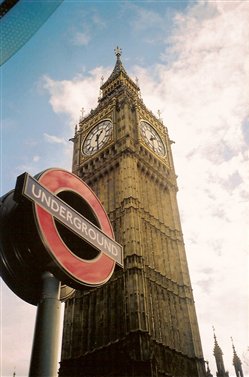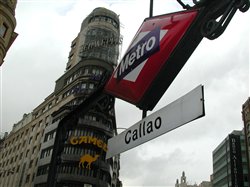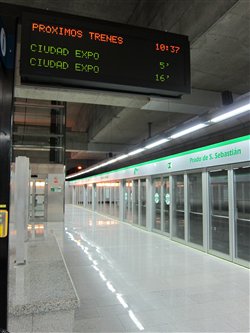When deciding where to study abroad, the hot topics leading students to their decision - food, weather, location, festivals, etc. - most times do not include public transportation. A hidden gem amongst the favored city must-haves, public transportation can add to a study abroad experience just as much as it’s other list-topping comrades. Discover the riches of the world's metros, a seemingly ordinary public service.
City-shrinker
While it's not always the case, many times students study in larger cities whose most desirable sites sit at polar opposite locations. Walking usually serves as the chosen mode of transportation, as walking tends to cultivate a more intimate relationship between student and city. But sometimes, let's face it, when you have to get somewhere you just want to get there and you want to move fast. Ergo, public transportation enters the mix.
Like the metros in Paris, Buenos Aires and Madrid, the subway in Shanghai and the U Bahn in Berlin, public transportation all over the world shrinks a city to a manageable size. Students can have their cake and eat it too as they enjoy the freedom to explore their favorite museum exhibition on one side of the city, yet still have time to meet their friends for a quick lunch on the other. Metros enable students to see more of what they want to see, taste more of what they crave to taste and experience more of what they've been dying to experience
Sense of Adventure
Configured in a chaotic web that interweaves below the city streets, many metro systems consist of several different lines, each with distinct destinations to which they transport thousands of people every day. Jump on the line in one city, switch trains a few times, and there's no telling where you might end up! This type of freedom offers an entire world of new adventure for any student brave enough to take it on.
Be spontaneous! Plan a day in which you catch the metro at your local stop with no plan of destination in sight. Bring along a map so you can eventually make your way home, and let the underground rails introduce you to a part of your host city unseen by daylight.

People-watching Paradise
Top tip to utilize while riding the rails: Sit, watch and listen. Like clockwork, the everyday life and culture of a city plays our before spectating eyes in the depths of this underground world. For many city dwellers, utilizing public transportation acts as just another factor in their daily routine. What does this mean for you? People-watching is its finest.
Witness the cultural mannerisms, the family life, the working world and the youthful radiance of your host country as people file in an out of the metro trains. Use these opportunities to practice your language skills with the young family that just spent the day at the park, or the elderly woman gazing peacefully at her shiny black shoes. The opportunities to observe, interact and learn are endless.

Mind the Gap
When you start to create your material list of characteristics to look for in a study abroad city (or if your're abroad now, deciding where you want to travel) don't forget to consider the metro factor. Like the nutella-slathered crepe you'll nibble on in Paris, or the cheerfully colored buildings you'll encounter in Buenos Aires' La Boca neighborhood, metros add a disguised spice to a city, jazzing up study abroad in an unimaginable way.
Maggie Zawalski is the Content Coordinator at CEA Global Education. She studied in Madrid during her Spring 2010 semester as a student at the University of Colorado Boulder.
